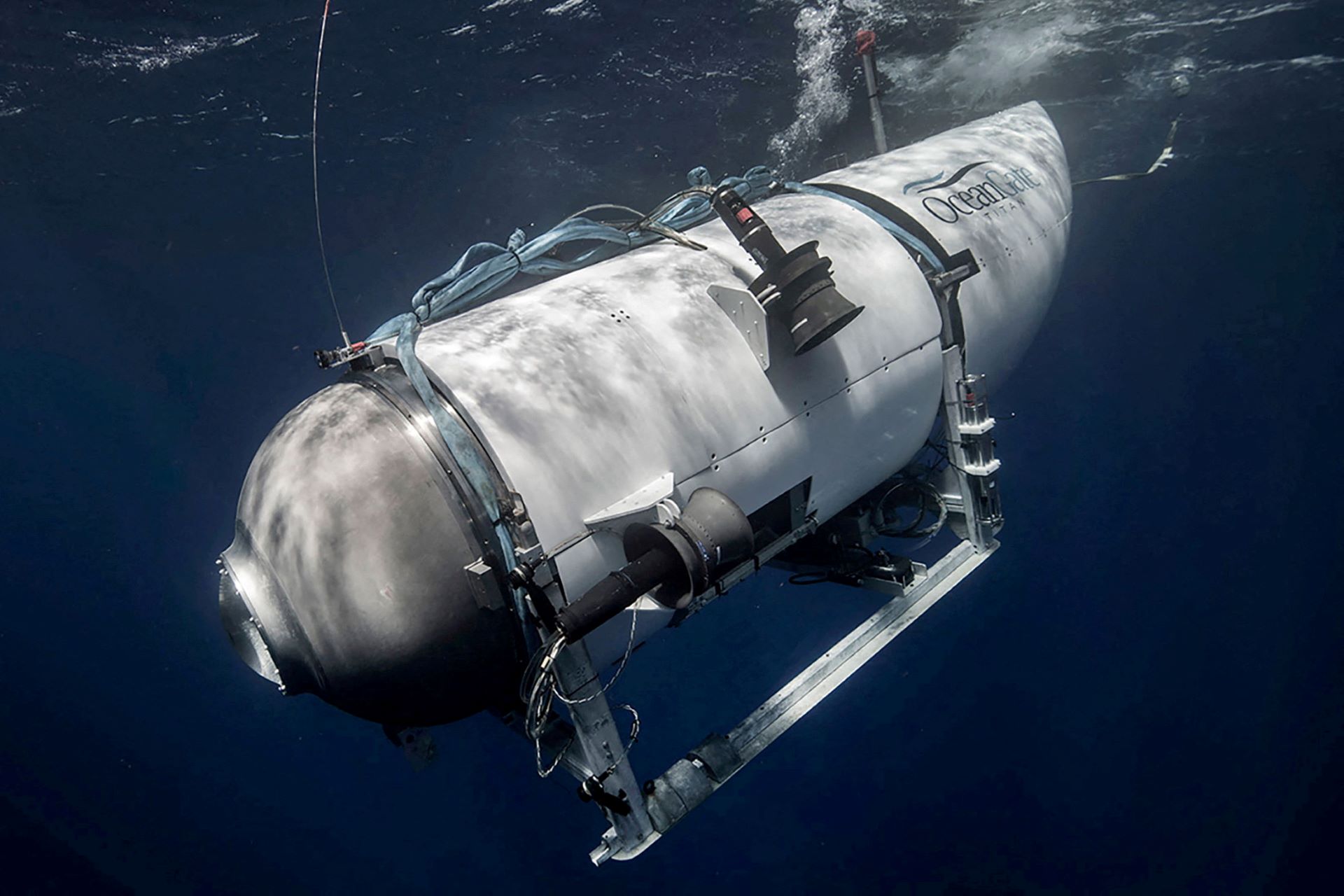
The time began counting down for his crew of 5 Tourist submarine Titan, who sought to reach his wreck Titanic. The search — which includes planes, ships, submarines and unmanned robotic vehicles — spanned an area of 10,000 square miles as the sounds of impacts increased. However, the US Coast Guard states that no one can be sure where these sounds come from. Hopes are waning, as some experts estimate that the five on board will all run out of oxygen after around 2:00 p.m., but they’re not completely out.
“We have to remain optimistic and hopeful,” Captain Jamie Frederick, who is involved in the search, told the BBC. Richard Garriott, president of the Explorers Club, also wanted to point out that hope was not lost. “There is good reason to keep our hopes up,” he wrote on social media, thanking everyone involved in the rescue effort for their support and hard work. Two of the five Titan crew members, Briton Hamish Harding and Frenchman Paul-Henri Narzolet, are members of the Explorers Club, an international organization over a century old engaged in scientific exploration.
Ships participating in the surveys
The US and Canadian navies, as well as government agencies and private companies specializing in deep-sea missions, coordinate the entire investigation. The following ships comb the area where the deep vessel is believed to be.
- Deep Energy – a commercial cable-laying vessel equipped with two ROVs (Remotely Operated Vehicles) capable of operating at depths of up to 3,000 metres.
- Atlantic Merlin – Canadian offshore supply vessel with winch system with a length of 4,000 metres. It does carry ROVs but it is not known how deep it can operate.
- Skandi Vinland – a subsea support vessel with two ROVs but it is not known how deep it can operate at
- L’Atalante – A French ship headed to the scene with a ROV capable of operating at the bottom of the Titanic wreck
- Horizon Arctic – Merchant ship loaded with support equipment
- Glace Bay – A Canadian Navy ship carrying a decompression chamber, ready to provide medical assistance
- John Cabot – A scientific research vessel with sonar search capabilities operated by the Canadian Coast Guard
Titanic Wreck: Watch the moment Titan begins its fateful journey (VIDEO)
Because we are not sure of the duration of the oxygen
It is certainly a very terrible and frightening prospect of being trapped in a submarine thousands of meters below the surface of the sea. The exact location of the submarine and the condition of the crew are unknown. It is believed that if the vessel remains intact, it may only have a few hours of oxygen left. However, this schedule is not necessarily rigid. Dr Ken Leeds, an expert in hyperbaric medicine at Memorial University in St John’s, told BBC News that, depending on the circumstances, some passengers could survive longer than expected.
“It depends on how cold it is and how effective it is at conserving oxygen,” he said, adding that shivering will use up a lot of oxygen, while wrapping yourself in a blanket can help keep you warm.
He explained that oxygen depletion is a gradual process. “It’s not like turning off a light, it’s like climbing a mountain — how quickly the temperature and metabolism drop depends on how fast you climb that mountain,” he said.
While Dr. Ladies admitted we don’t know the full situation inside the submarine, he noted that conditions can vary from person to person and that although it’s a “tough discussion,” some may live longer than others. Vice Admiral Mauger told the BBC: “We don’t know the rate of oxygen consumption per passenger on the submarine.”
The ship may also have lost electrical power, which likely plays a role in controlling the amount of oxygen and carbon dioxide inside the vessel. As the oxygen level drops, so will the percentage of carbon dioxide exhaled by the crew, with potentially catastrophic consequences. “When carbon dioxide levels build up, it acts like an anesthetic gas.”
Too much gas in the bloodstream, known as hypercapnia, can kill them if left untreated. Ryan Ramsey, a former Royal Navy submarine commander who has seen footage from Titan’s interior, says he doesn’t see a carbon dioxide removal system known as scrubbers. “This, to me, is the biggest problem of all,” he noted.
Titanic Wreck: Watch the moment Titan begins its fateful journey (VIDEO)

“Hipster-friendly coffee fanatic. Subtly charming bacon advocate. Friend of animals everywhere.”





More Stories
Horrific case: Norwegian ‘butcher’ mutilated customers on live broadcast
“We will fight even with our claws”
How Six Day Work Will Work – What’s Up With the Day Off – Newsbomb – News